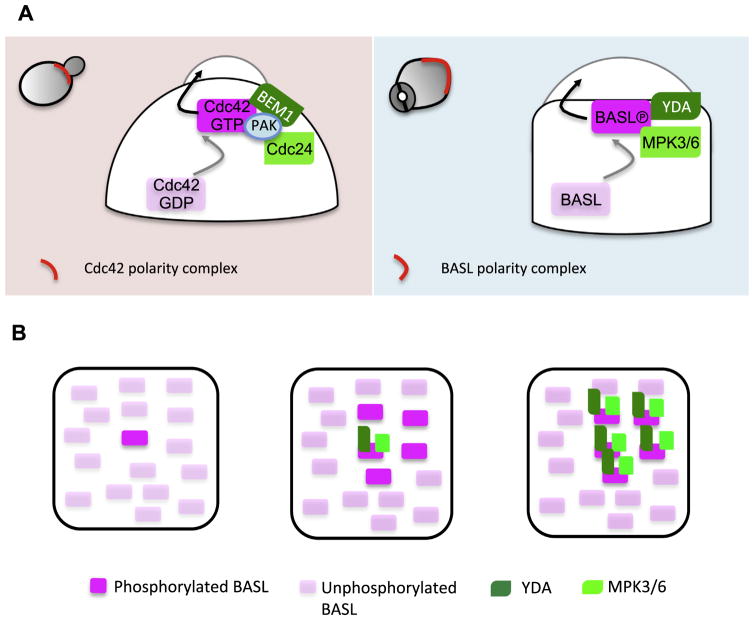Fig 1.
Symmetry-breaking polarization of Cdc42 and BASL in yeast and Arabidopsis stomatal lineage cells. (A) Left panel: Spontaneous polarization of the Cdc42-Bem1-Cdc24/PAK feedforward loop. In budding yeast, stochastically activated Cdc42-GTP (gray arrow) recruits the scaffold protein Bem1, which locally enrich Cdc24 the Cdc42 GEF activator, to amplify activated Cdc42-mediated protein clustering. This intrinsic positive feedback loop polarizes Cdc42 to the cortical site and promotes daughter cell expansion (black arrow). Right panel: In Arabidopsis stomatal ACD precursor cells, a positive feedback loop of BASL-YDA-MAPK3/6 promotes cell polarization. MPK3/6-mediated phosphorylation triggers BASL cortical polarization (gray arrow). At the cell cortex, phosphorylated BASL functions as a scaffold to recruit both YDA and MPK3/6, which further produces more activated MPK3/6, and thus more activated BASL to polarize. Polarization of the BASL complex was hypothesized to promote local cell expansion (black arrow) (B)Working model for spontaneous clustering of BASL-YDA-MPK3/6 in plant cells. We hypothesize that, similar to Cdc42 polarization, initially activated BASL molecules organize a positive feedback loop by recruiting its activators YDA-MPK3/6, which allows the conversion of neighboring molecules to become active, eventually leading to the formation of a polarized cluster.

